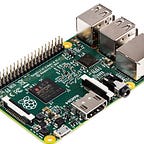Web development has evolved significantly over the years, and among the pivotal tools that have transformed how we write CSS are CSS preprocessors. Sass and Less are two popular CSS preprocessors that bring extended functionality and flexibility to standard CSS, making them invaluable in modern web development. In this article, we will delve into the advantages of using Sass and Less, helping you decide which might be best for your next project.
What is Sass?
Sass (Syntactically Awesome Stylesheets) is a preprocessor scripting language that is interpreted or compiled into CSS. SassScript is the scripting language itself. Sass has two syntaxes: the original indented syntax and SCSS (Sassy CSS), which is more similar to CSS.
Advantages of Sass
- Variables: Sass allows you to use variables to store reusable values such as colors, font stacks, or any CSS value you need.
- Nesting: With Sass, you can nest your CSS selectors in a way that follows the same visual hierarchy of your HTML.
- Partials: Sass lets you write small CSS files (partials) that can be imported into a main stylesheet, reducing the code redundancy.
- Mixins: Mixins allow you to create reusable chunks of code in Sass.
- Inheritance: Sass supports inheritance using the
@extenddirective, which helps you avoid code duplication.
